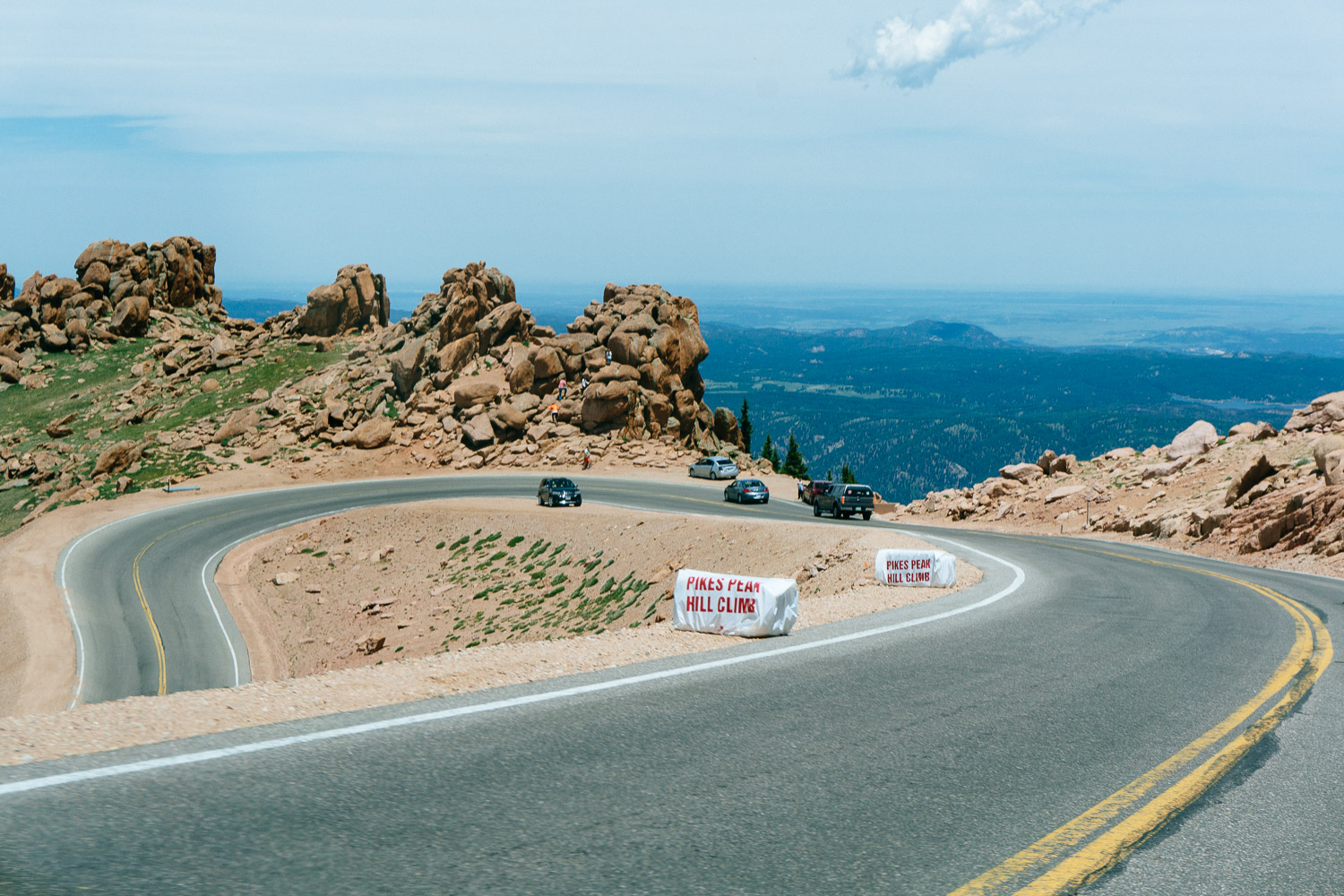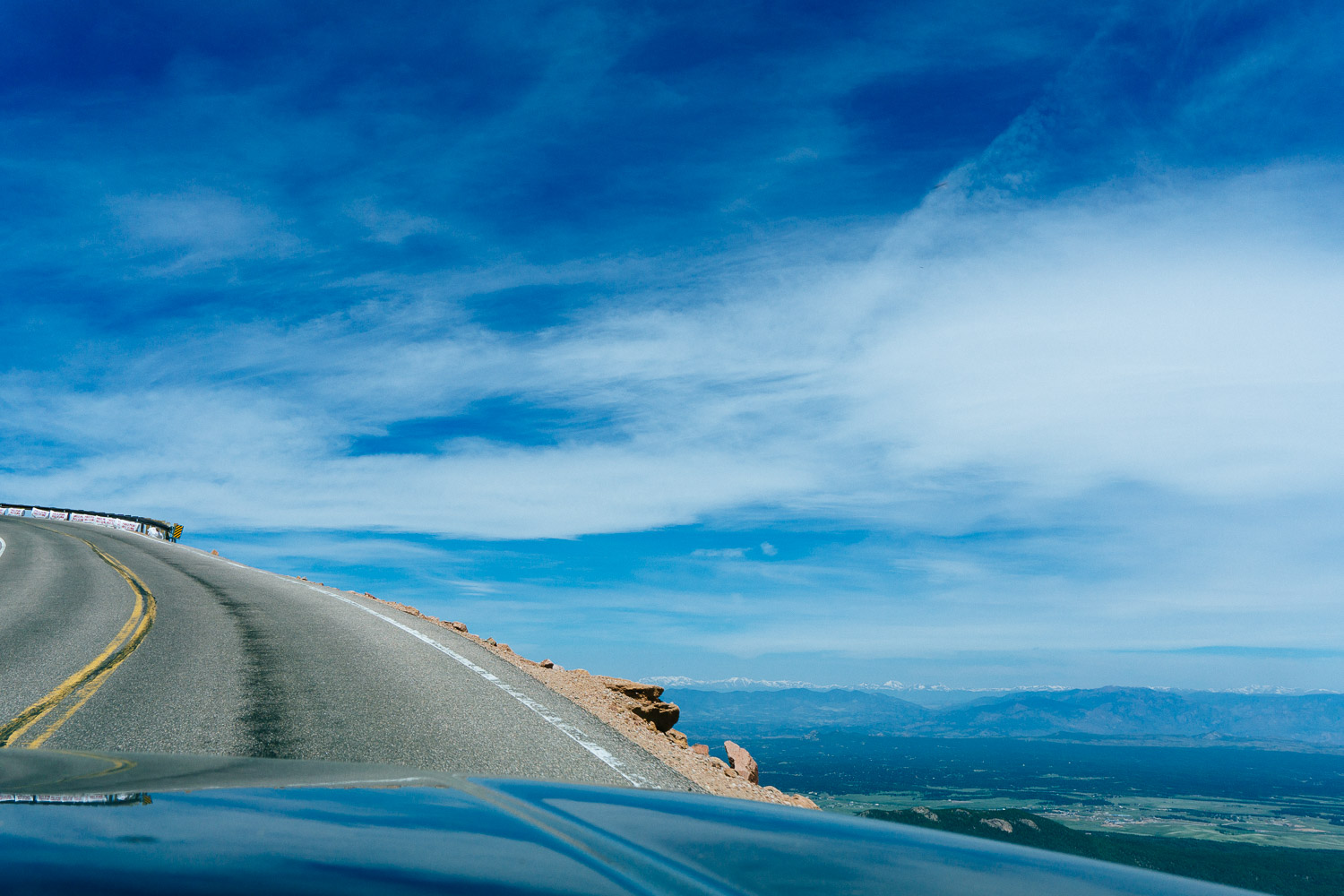 SONY ILCE-6000 (25mm, f/9, 1/400 sec, ISO100)
SONY ILCE-6000 (25mm, f/9, 1/400 sec, ISO100)
I’m from Austria which means that I have hiked quite a lot but strangely I was never that high above sea level before except when in an airplane.
Pike’s Peak is 4.300 meter and we climbed it US-style which means that we drove up there in our car. Our rental was a Chevrolet Tahoe, a big truck based SUV with a 5,3 litre V8 with 355hp though at this height it had only 180hp. Still good enough to take us up there.
In the USA there are a lot of warning signs but regarding actual safety they are surpassingly nonchalant. Beside some crash barriers in the corners there wasn’t much that blocked the view in between. Usually I take the out of the car shots myself but in case of those images my wife insisted to take the pictures. It would have looked even more impressive from my point of view.
 SONY ILCE-6000 (27mm, f/9, 1/160 sec, ISO100)
SONY ILCE-6000 (27mm, f/9, 1/160 sec, ISO100)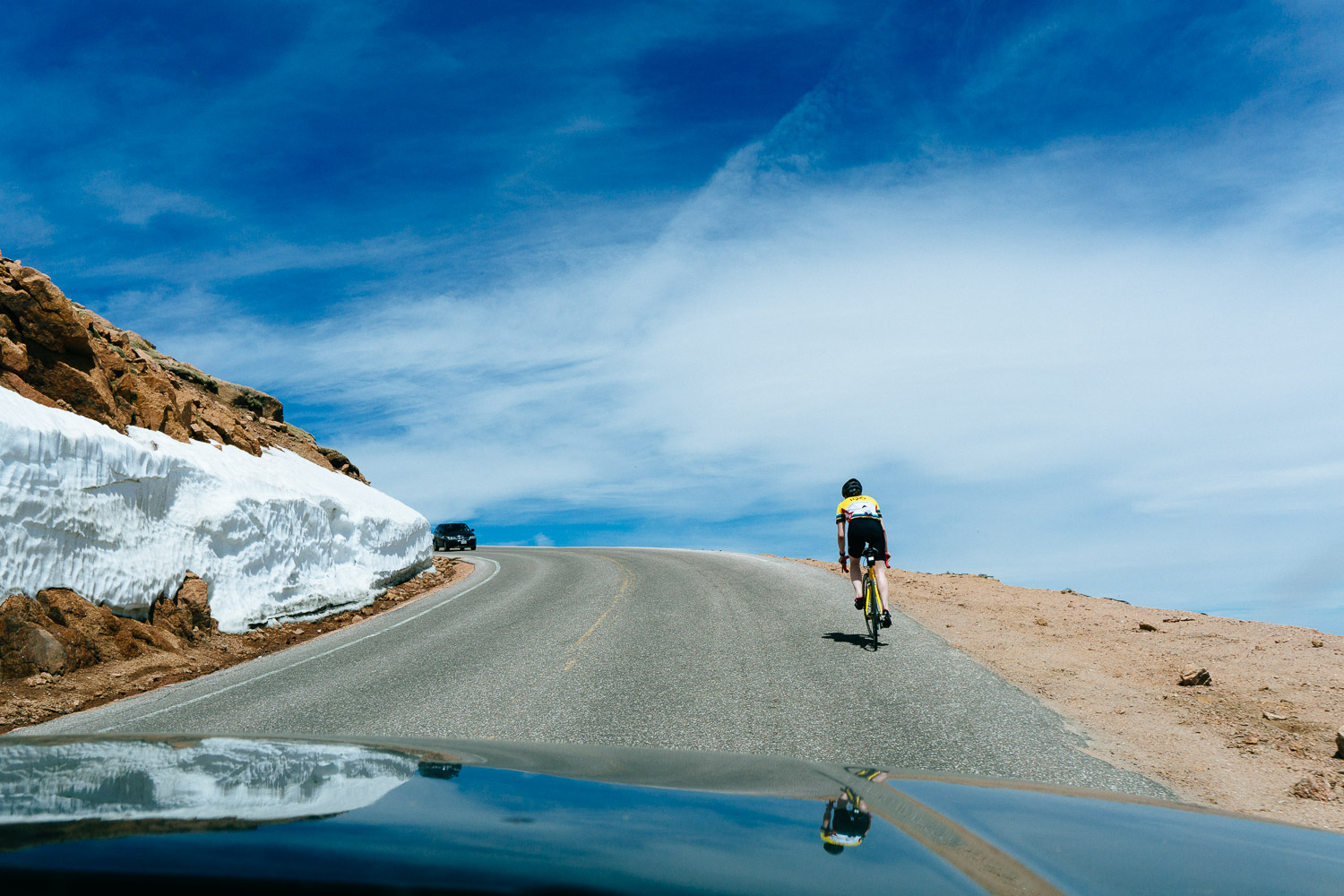 SONY ILCE-6000 (25mm, f/9, 1/400 sec, ISO100)
SONY ILCE-6000 (25mm, f/9, 1/400 sec, ISO100)
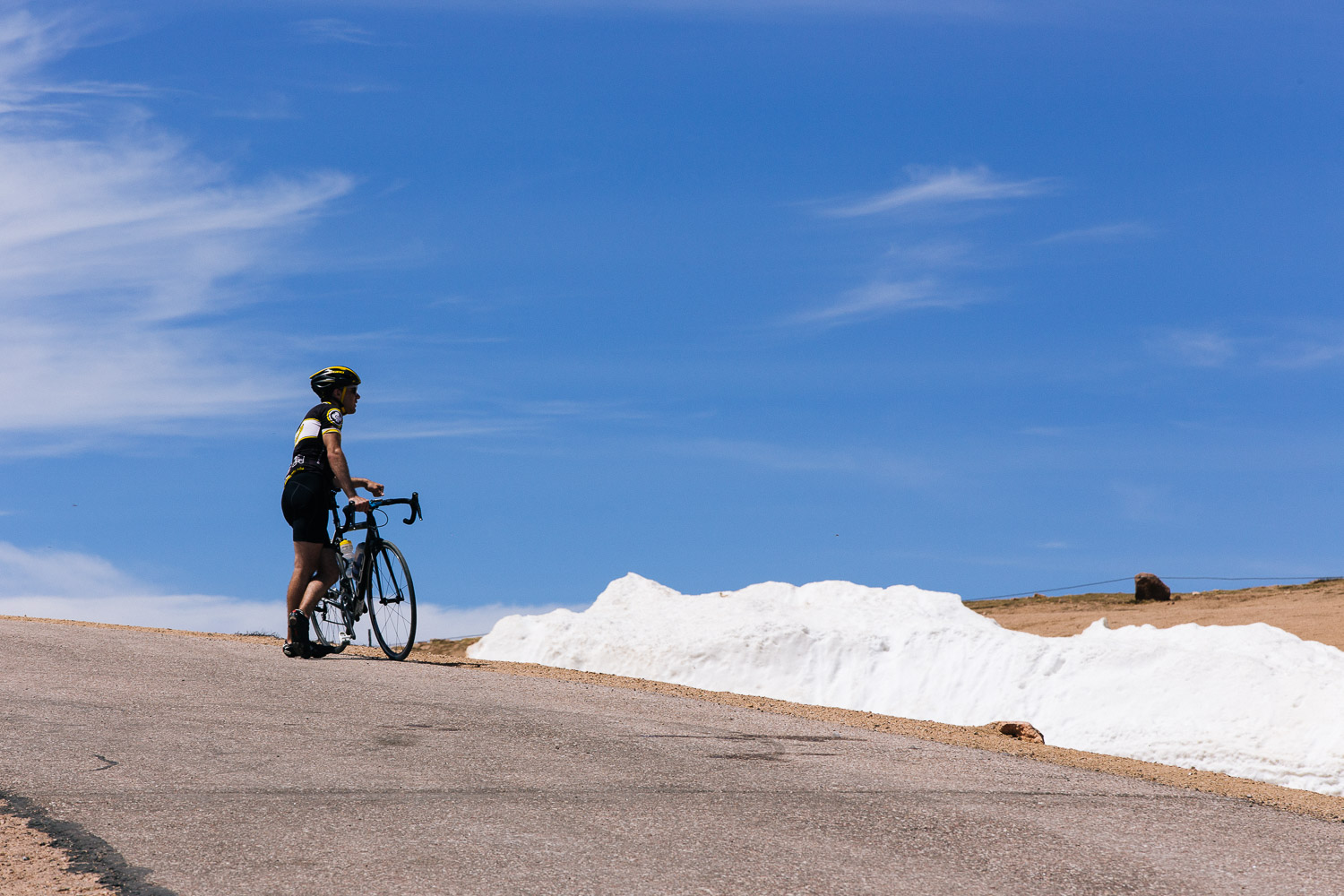 Canon EOS 6D (200mm, f/13, 1/320 sec, ISO100)
Canon EOS 6D (200mm, f/13, 1/320 sec, ISO100)
Like everywhere in Colorado we saw cyclists. Imagine to live here and that you could ride up here on a regular base with your bike.
On top there is a big parking lot and of course still some snow from last winter. But it was sunny and warm so that my hiking sandals didn’t feel completely out of place. The view from the top was amazing but there was not a lot to do of course except to take a good look around. Above 4.000 meters the lack of oxygen is obvious. It’s easy to get out of breath and we felt a little dizzy.
There was a shop and a small restaurant that didn’t look inviting. Better to eat when we are back down again.
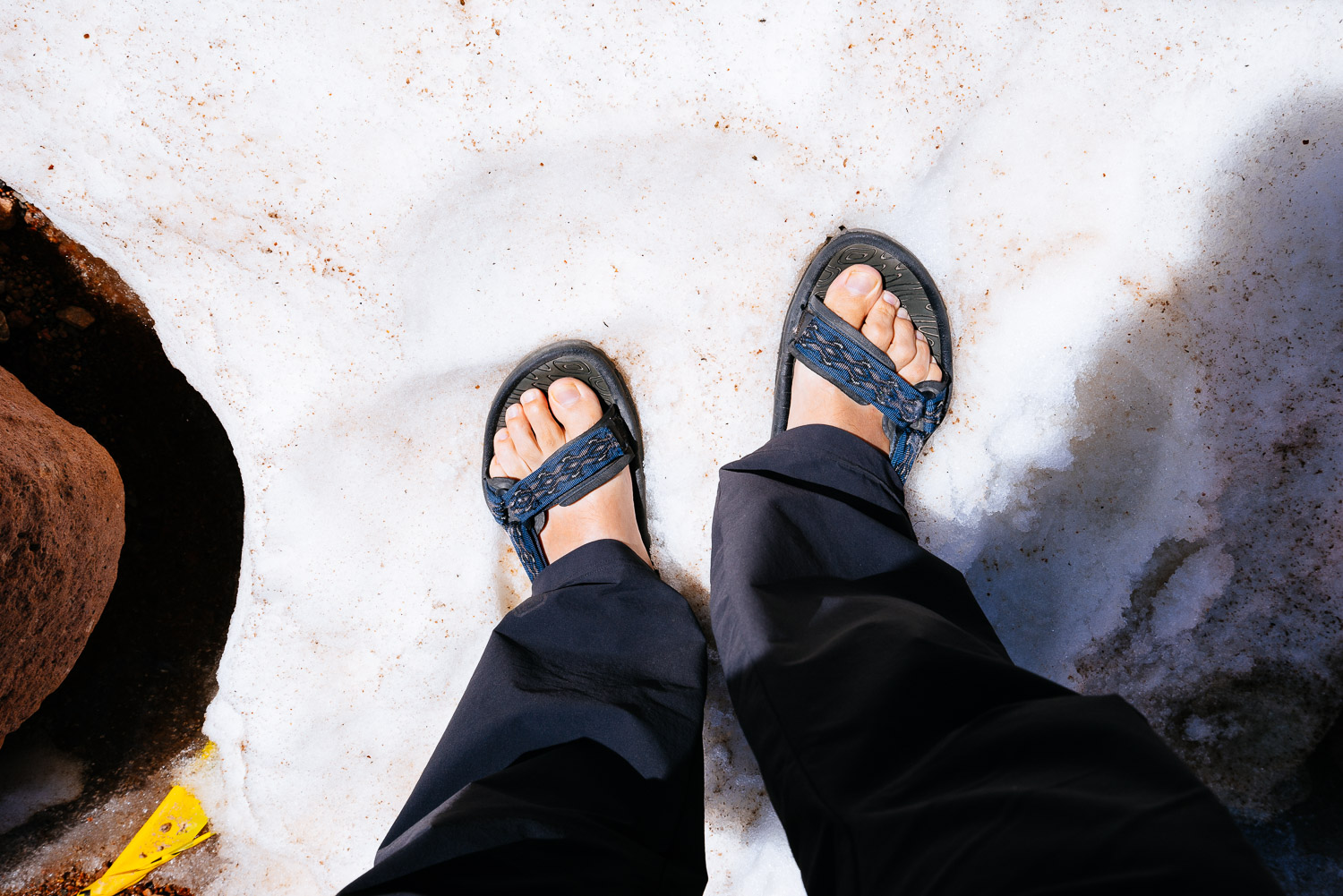 SONY ILCE-7R (35mm, f/10, 1/250 sec, ISO100)
SONY ILCE-7R (35mm, f/10, 1/250 sec, ISO100)
 SONY ILCE-7R (35mm, f/14, 1/80 sec, ISO100)
SONY ILCE-7R (35mm, f/14, 1/80 sec, ISO100)
 SONY ILCE-7R (16mm, f/14, 1/200 sec, ISO100)
SONY ILCE-7R (16mm, f/14, 1/200 sec, ISO100)
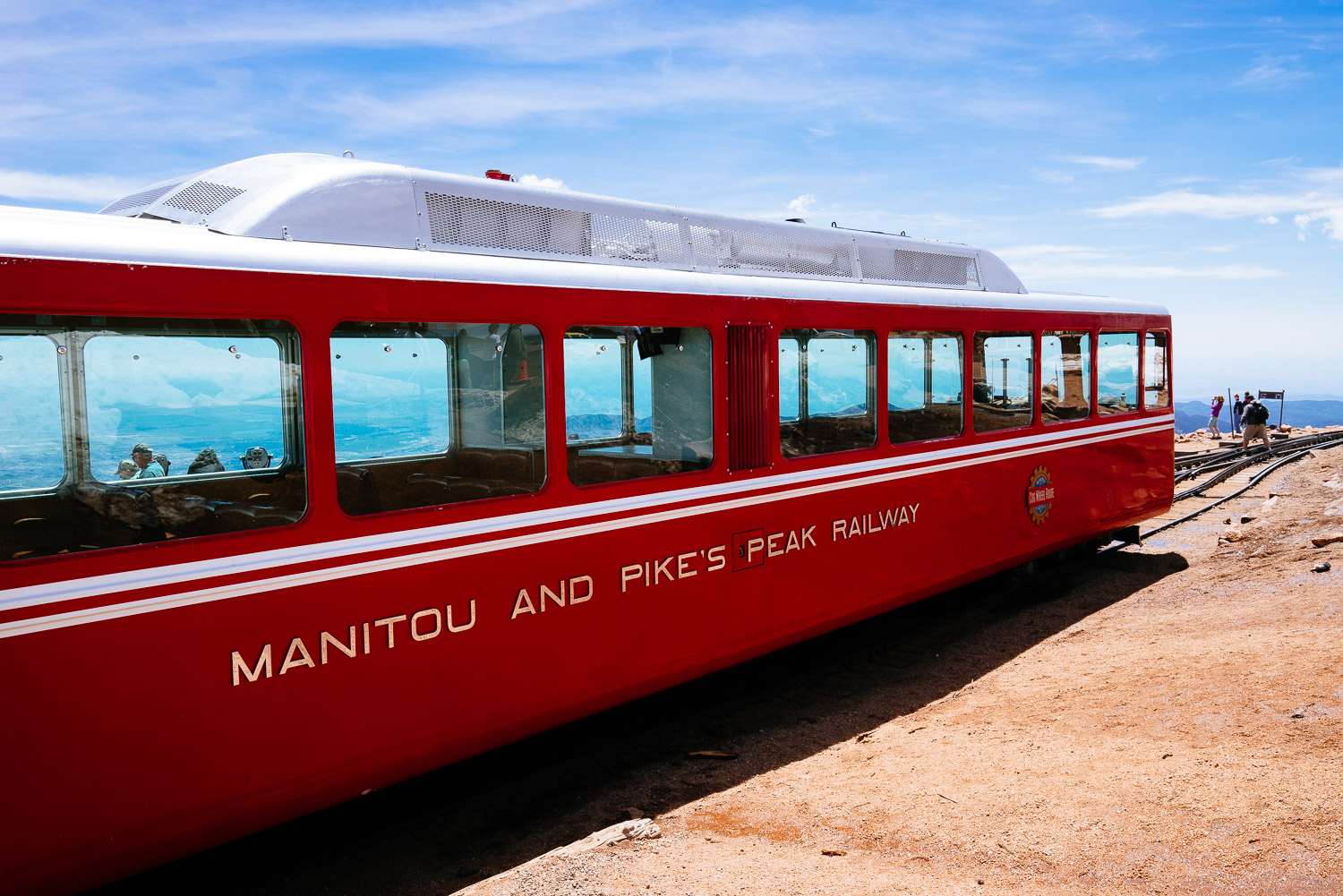 SONY ILCE-7R (30mm, f/14, 1/80 sec, ISO100)
SONY ILCE-7R (30mm, f/14, 1/80 sec, ISO100)
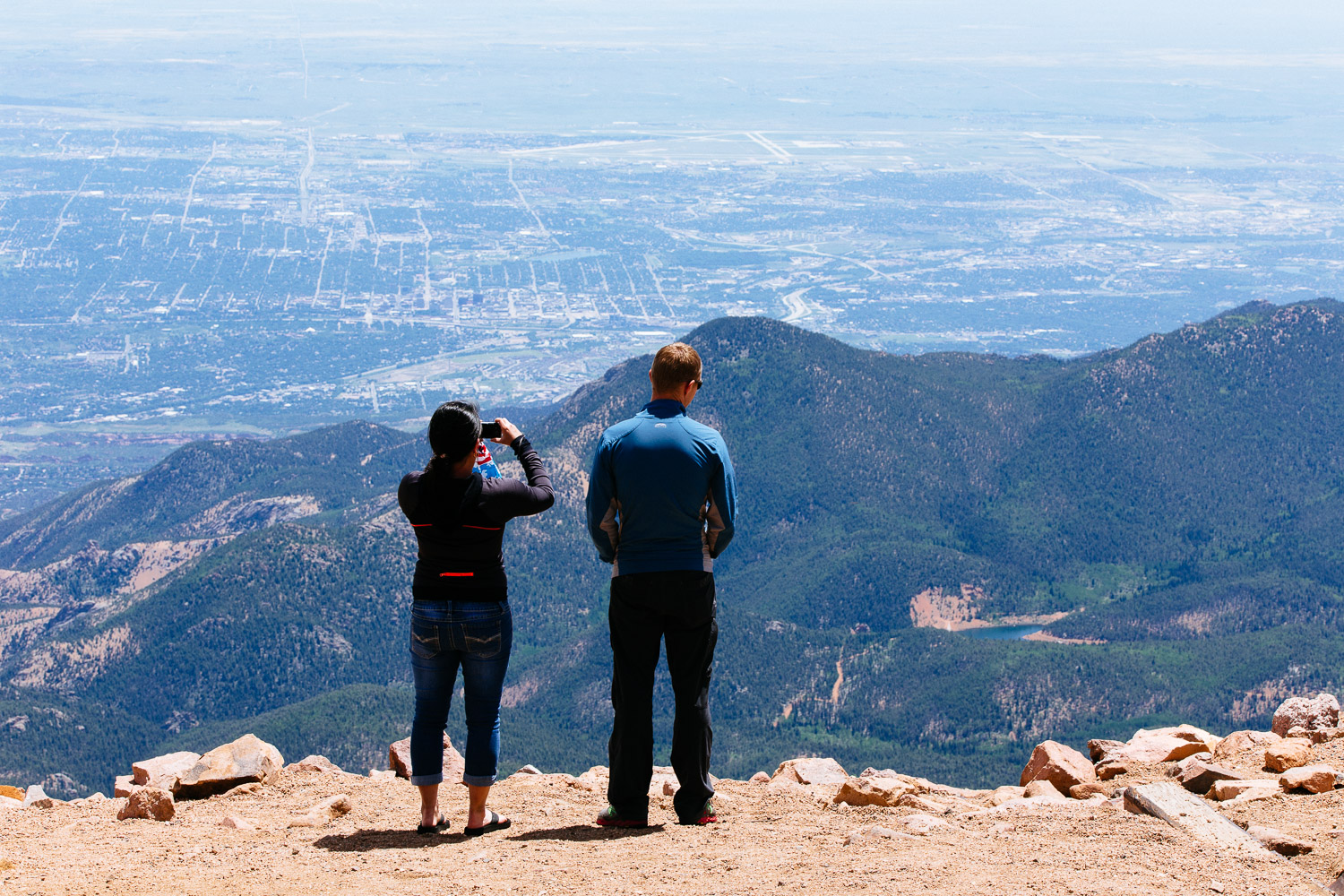 Canon EOS 6D (90mm, f/13, 1/160 sec, ISO160)
Canon EOS 6D (90mm, f/13, 1/160 sec, ISO160)
There is also a beautiful train that goes all the way up in case you don’t feel comfortable to drive up here yourself. There was a company that rented MTBs to ride down from the top. What a brilliant idea: To give not very sporty people that usually never ride a bike a chance to ride down a steep mountain road on a bicycle. What could possibly go wrong?
But some drivers also had the problems on their way down in their cars. Instead of changing to a lower gear they were riding their brakes all the time to stay within the crazy low speed limit. If you do that of course your brakes will overheat and at the end fail. Everybody who grew up in a country with mountains knows that. Apparently not so many people know that here.
The two cars in front of me had their brake lights on all the time. As a consequence they were both pulled out at a check point where the temperature of the brakes got checked. They needed to wait a couple of minutes before the could continue their descent. I rolled down the window when the brakes were checked on our car and was told that I was good and that I could drive on. Perfect! Now the road was free and I went down slightly faster than before.
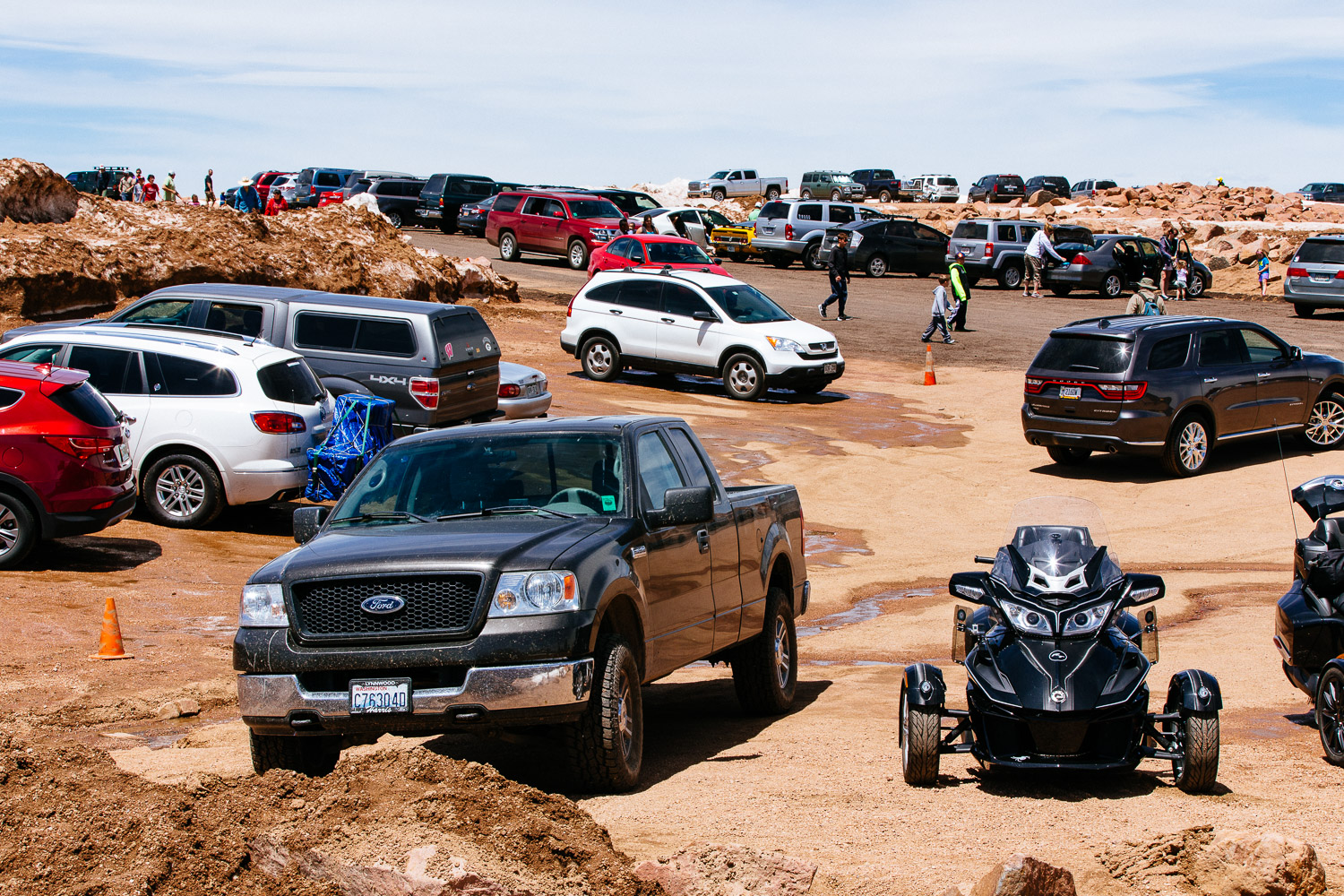 Canon EOS 6D (70mm, f/16, 1/125 sec, ISO160)
Canon EOS 6D (70mm, f/16, 1/125 sec, ISO160)
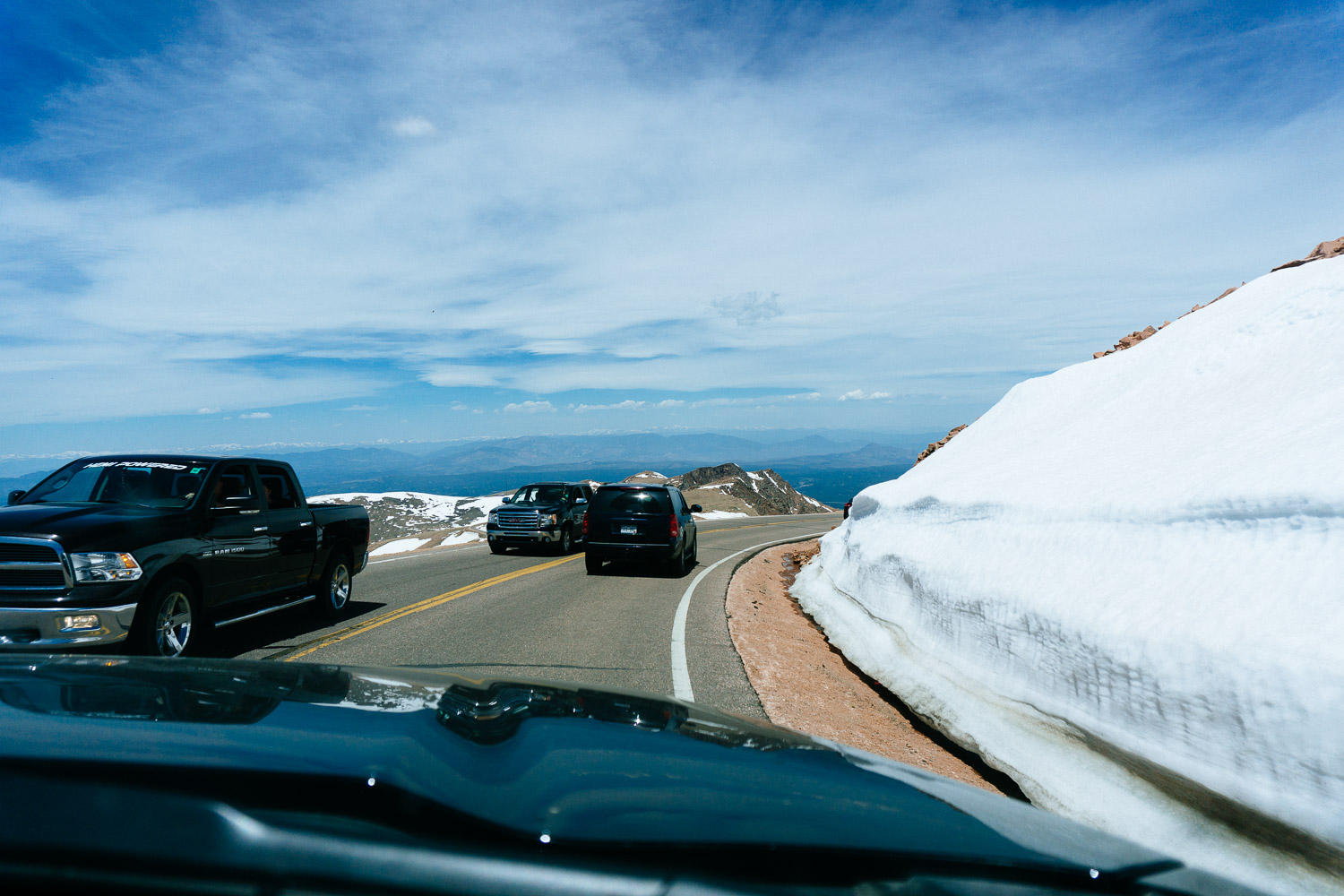 SONY ILCE-6000 (16mm, f/5.6, 1/1000 sec, ISO100)
SONY ILCE-6000 (16mm, f/5.6, 1/1000 sec, ISO100)
Being in such a height you never know how your body reacts. My wife was fine up there but got a horrible headache after we arrived in Manitou Springs. Manitou Springs is still almost 2.000 meters above sea level. Luckily it went away as quickly as it came but if you have a problem in high elevations you need to be careful here.
The problem is the same as with sea sickness. Usually you can’t tell until you experience it for the first time. But one thing was obvious. During this vacation we spent a lot of time at elevation higher than 2.000 meters and that had a very nice effect when we were back home. Your body will adjust and produce more red blood cells to compensate the lack of oxygen. Once back close to sea level you will profit from this for a while. Another good reason to come here: it is good for your health.

